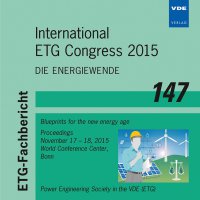Planning and operation of rural HV distribution grids of the future
Conference: International ETG Congress 2015 - Die Energiewende - Blueprints for the new energy age
11/17/2015 - 11/18/2015 at Bonn, Germany
Proceedings: International ETG Congress 2015
Pages: 6Language: englishTyp: PDF
Personal VDE Members are entitled to a 10% discount on this title
Authors:
Martin, Linda; Boese, Carsten; Gemsjaeger, Ben (Siemens PTI, Erlangen, Germany)
Harnisch, Sebastian; Steffens, Philipp; Thies, Hans; Zdrallek, Markus (Bergische Universität Wuppertal, Wuppertal, Germany)
Hache, Jens; Noske, Tino (Mitteldeutsche Netzgesellschaft mbH, Halle (Saale), Germany)
Abstract:
This paper presents the applied methodology of innovative grid planning and the results of a variety of network expansion planning variants of 110 kV distribution grids of large German distribution grid operators. This includes variants with the exclusive use of conventional primary equipment, the exclusive use of innovative technologies as well as a combined and economically optimized conventional-innovative expansion planning approach. Out of this, a statement of flexibility of implementation is possible. Results show that an innovative operation mode has an enormous effect as it decreases the amount of overhead lines needed at very low costs by a new approach of network planning. These costs can be further reduced if overhead line monitoring is implemented. Another measure is the active power limitation, which limits the feed-in power of all distributed generators in the high voltage network to a fix value. Nevertheless, compensation payments for reduced distribution generation counteract the savings due to reduction of overhead lines related to the curtailment. Considering the assumed development of supply, the installation of at least one 380 kV substation at an early stage shows significant saving potential as it reduces the total expenditures necessary by approximately one third.


